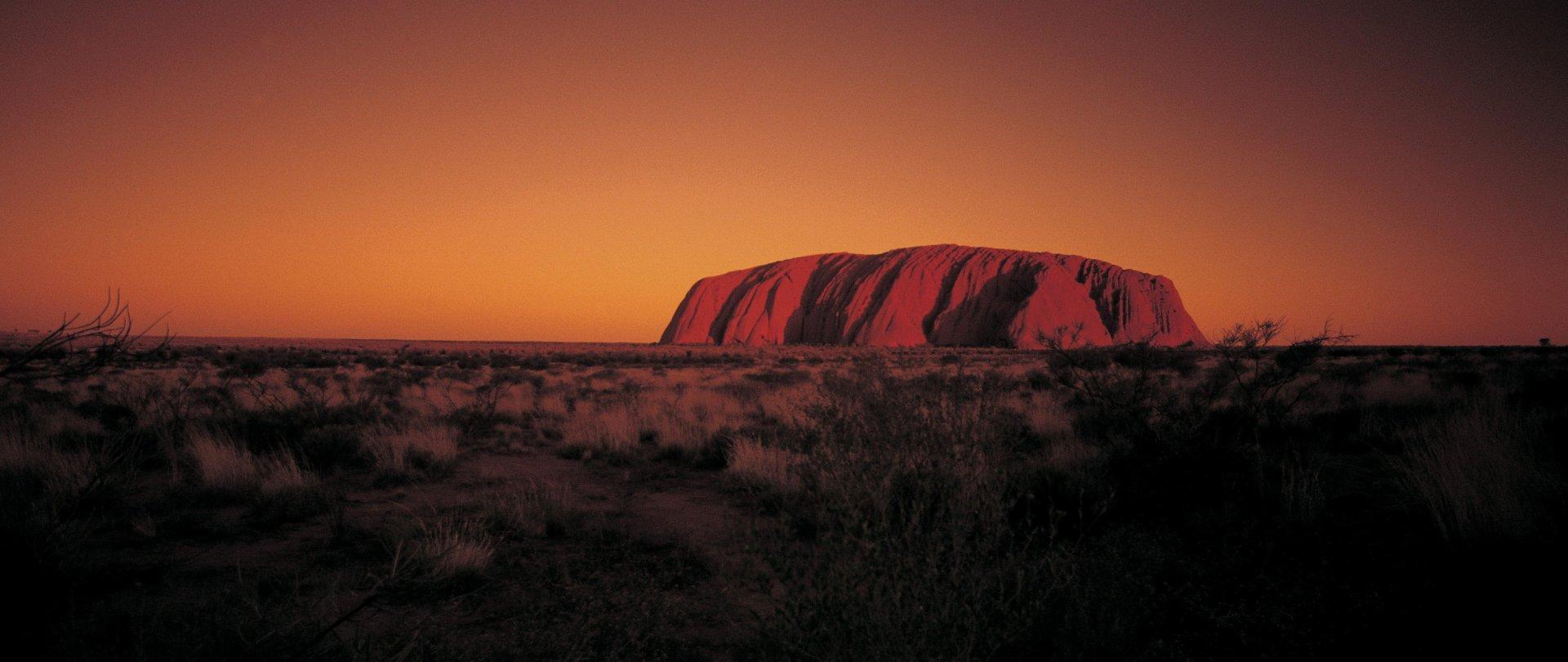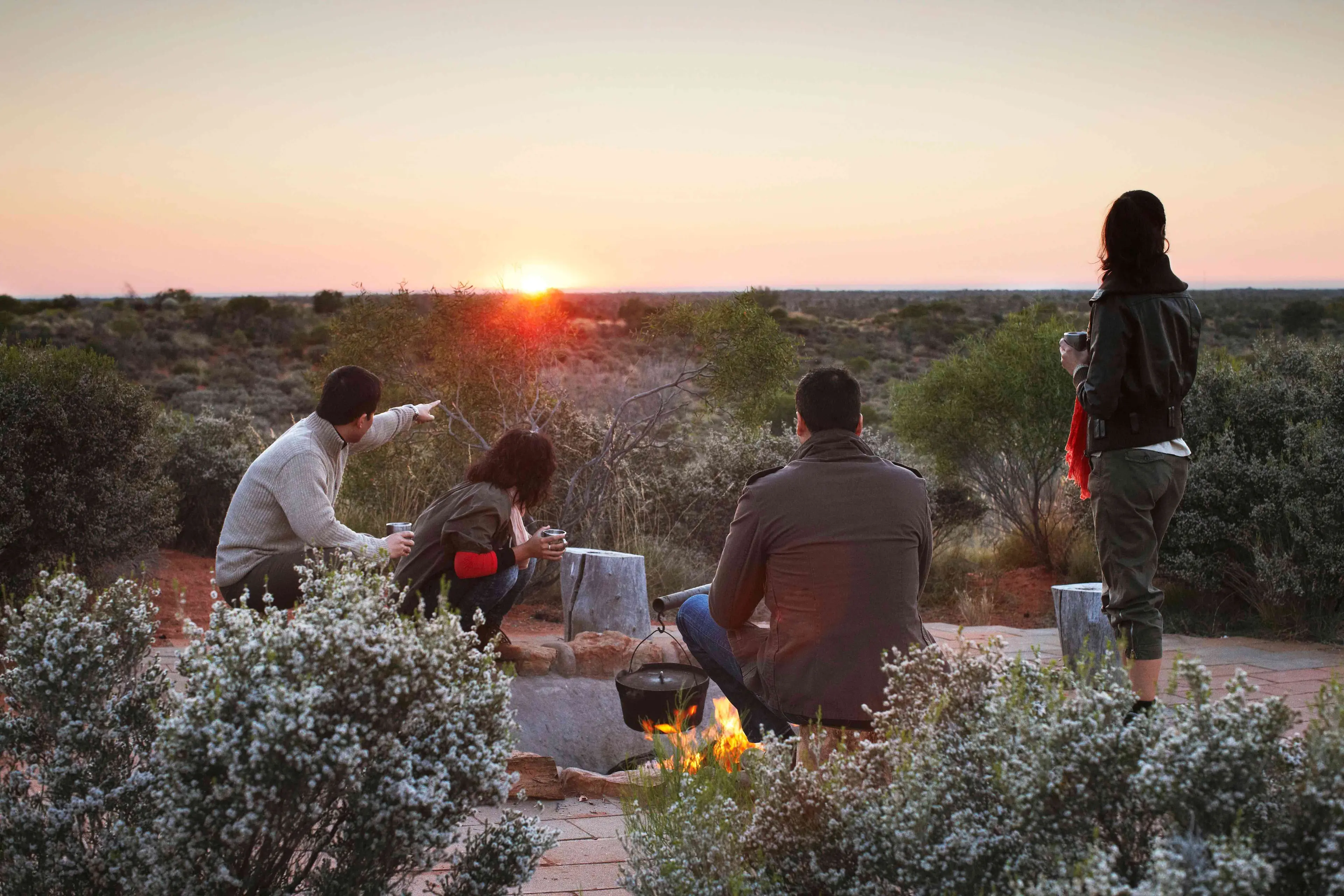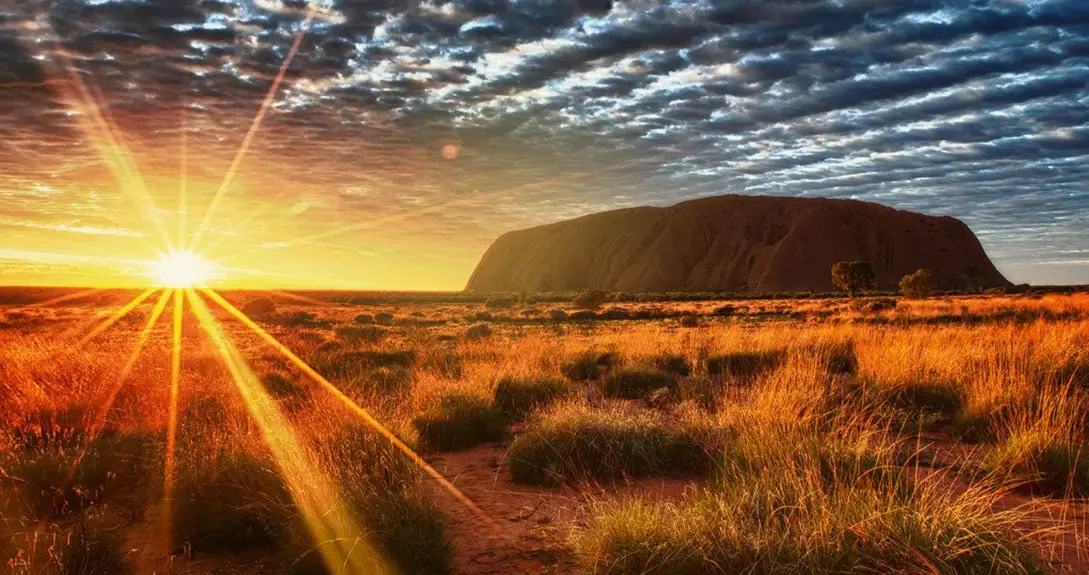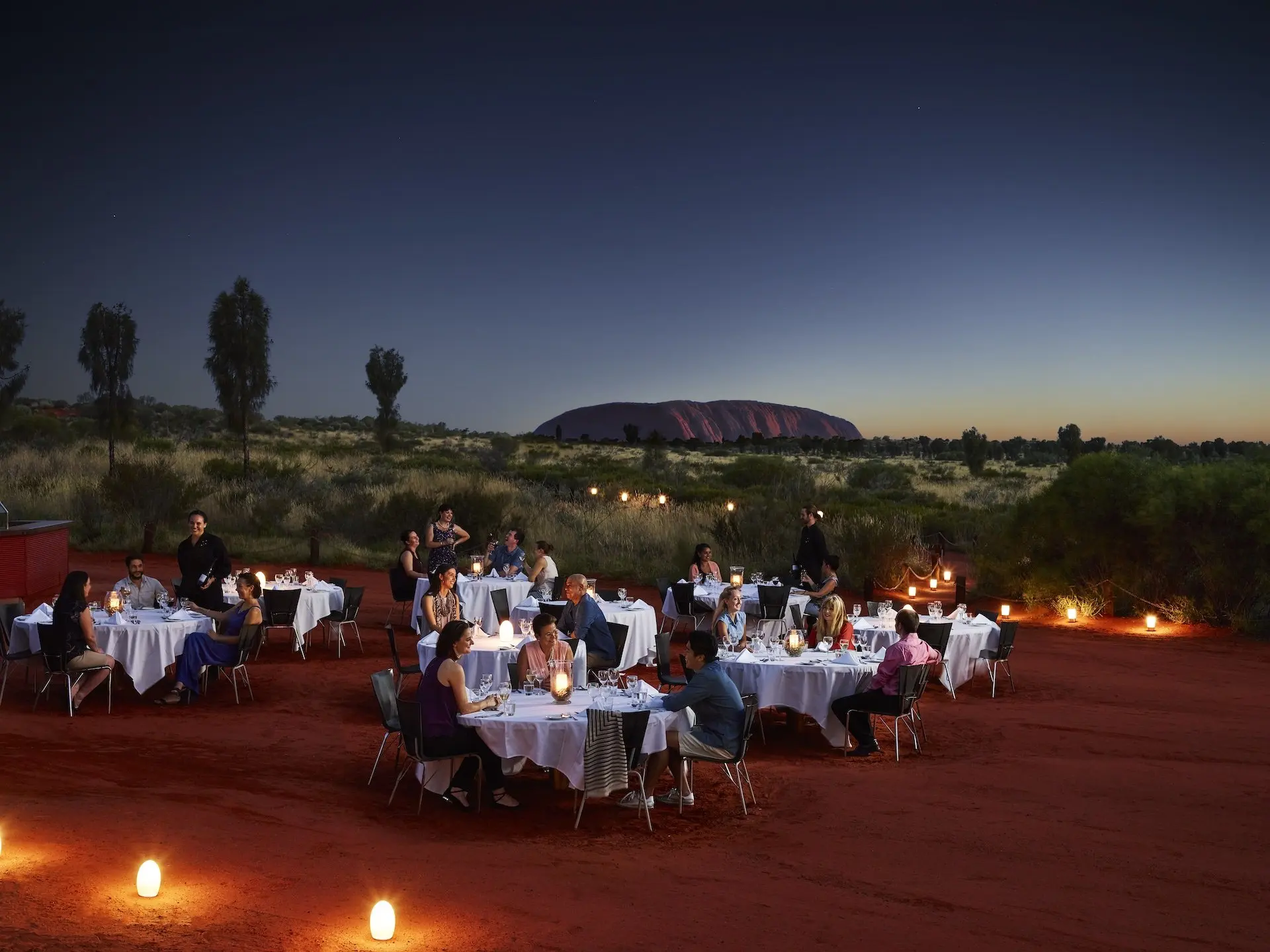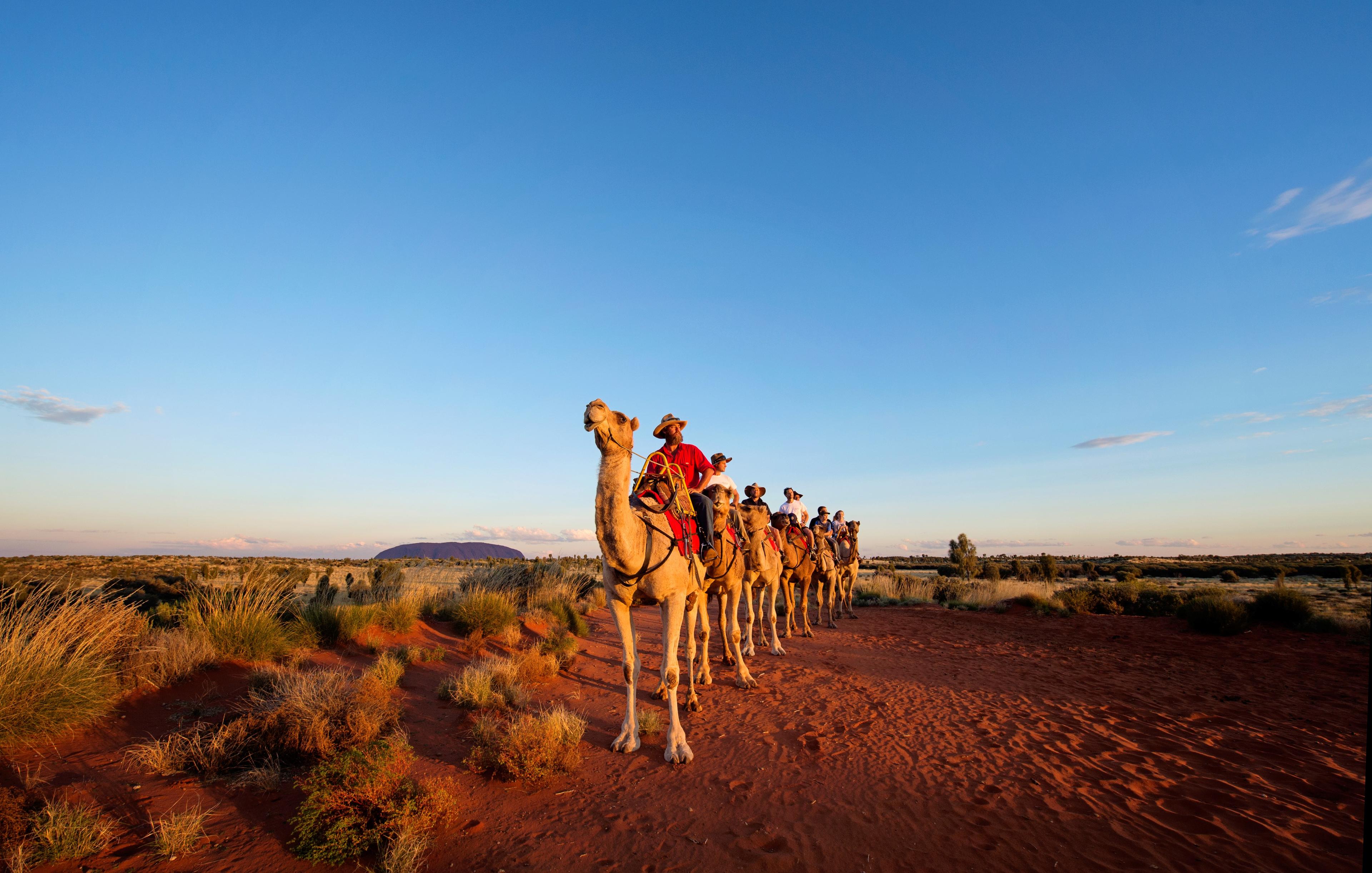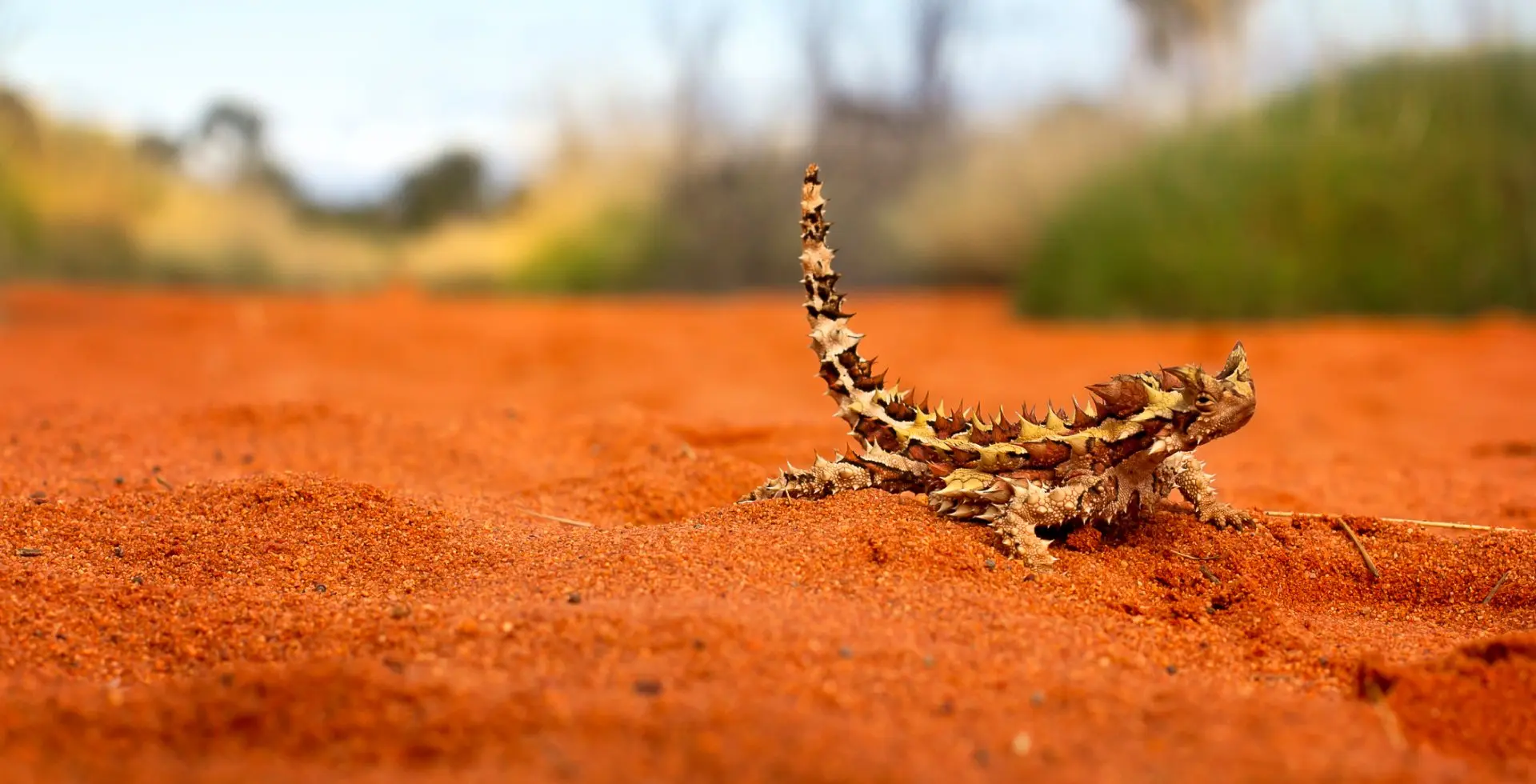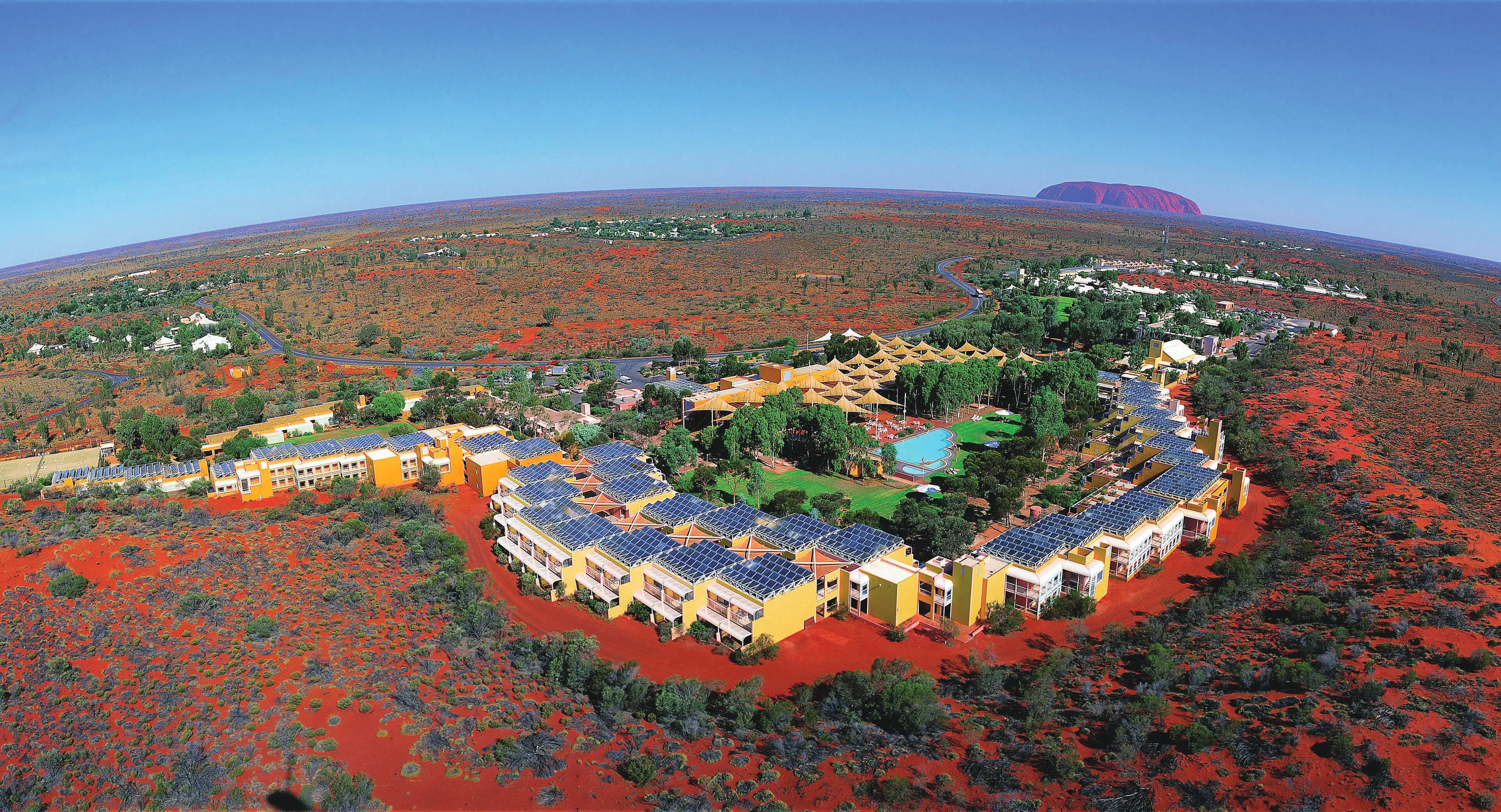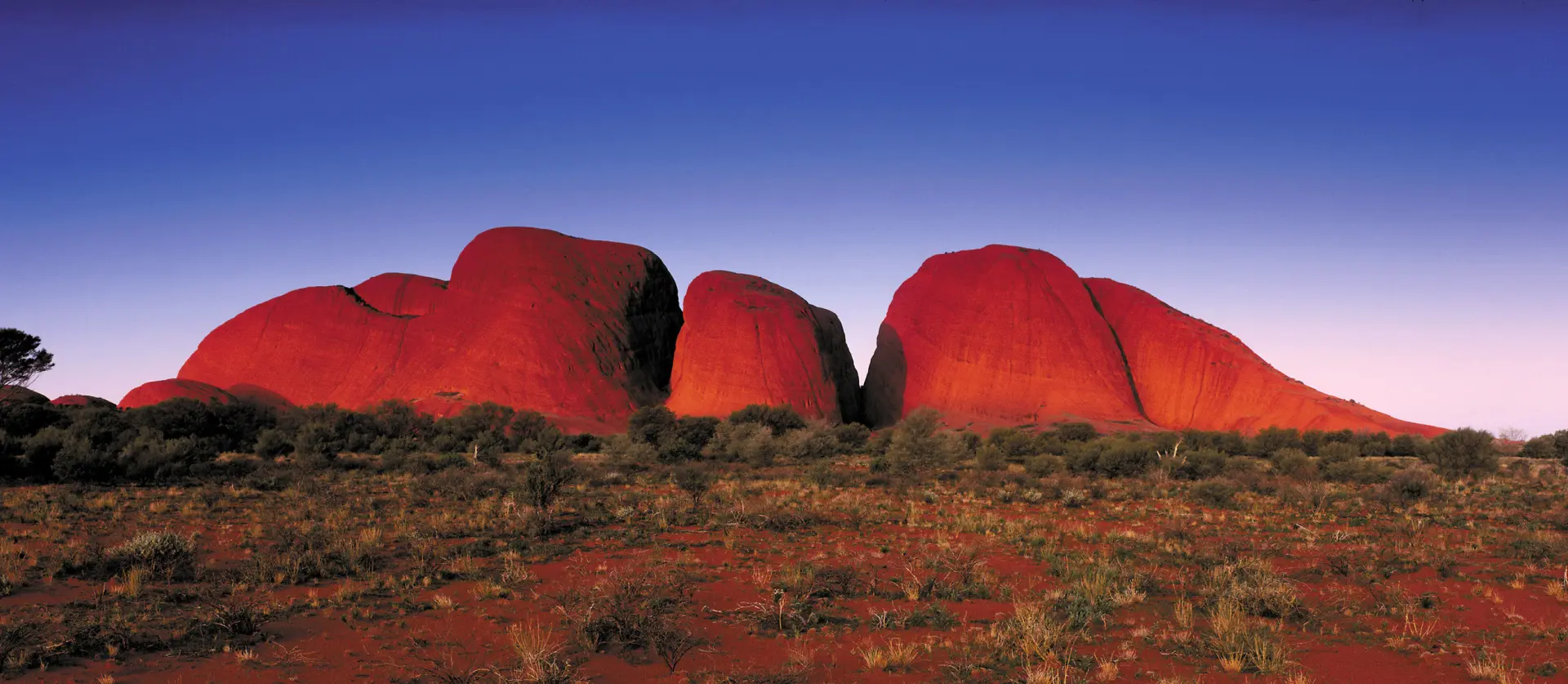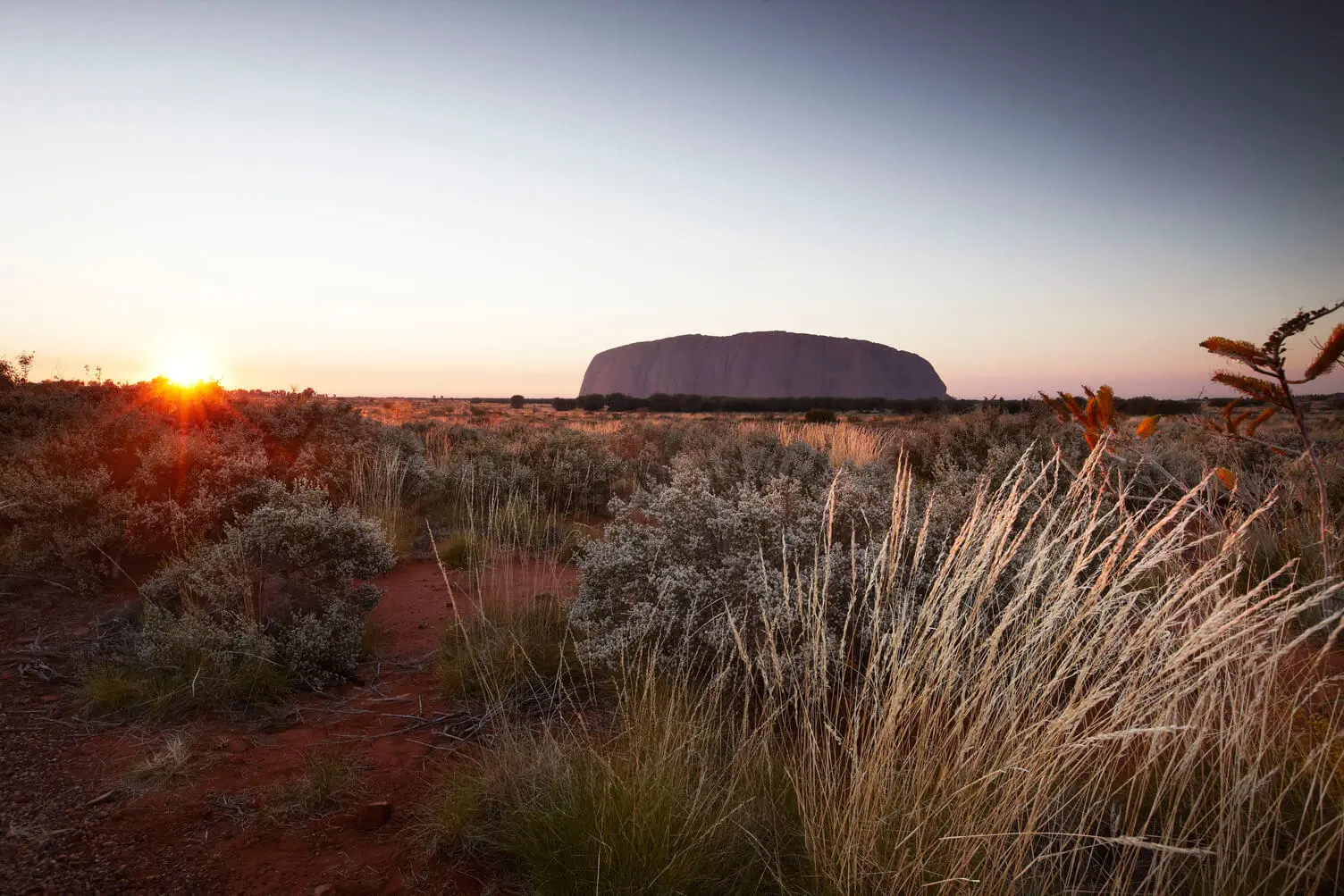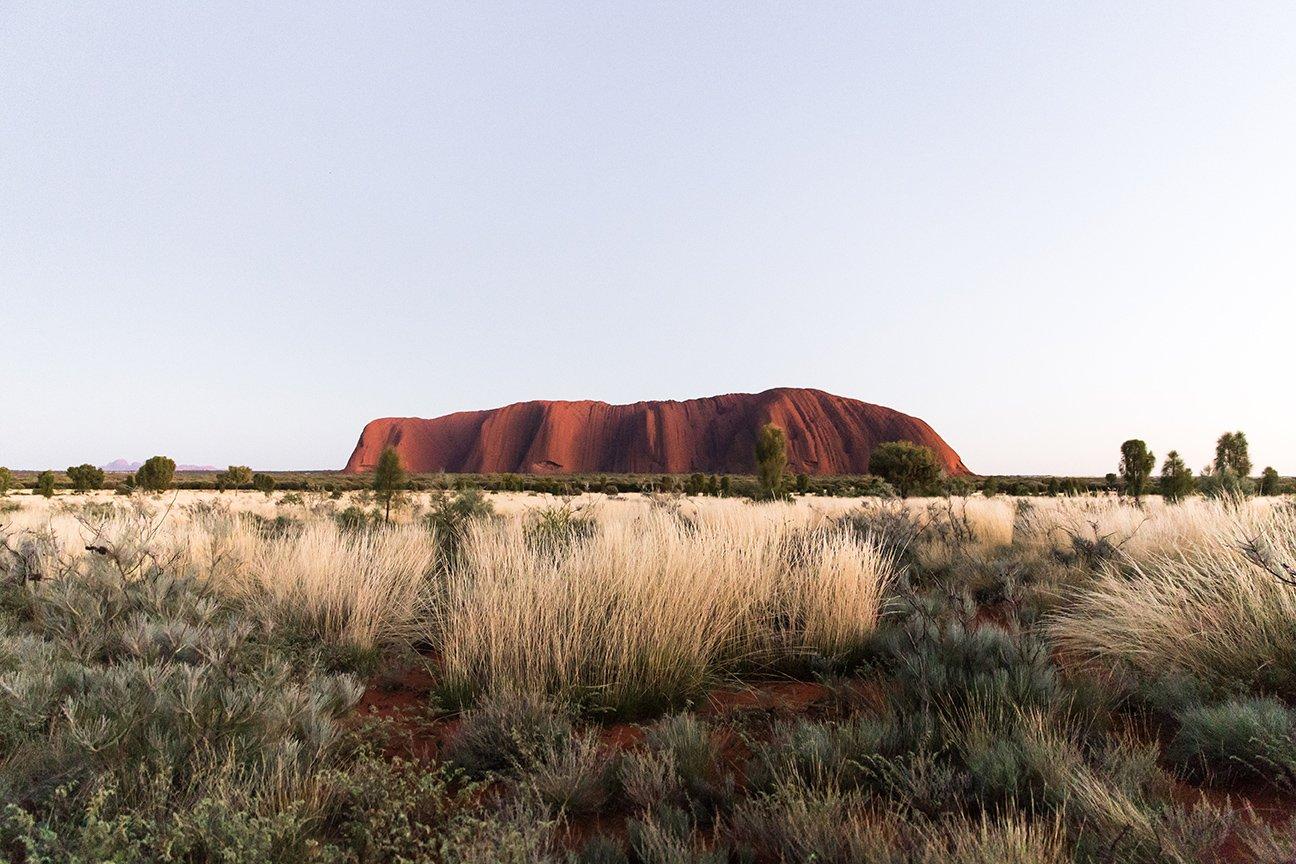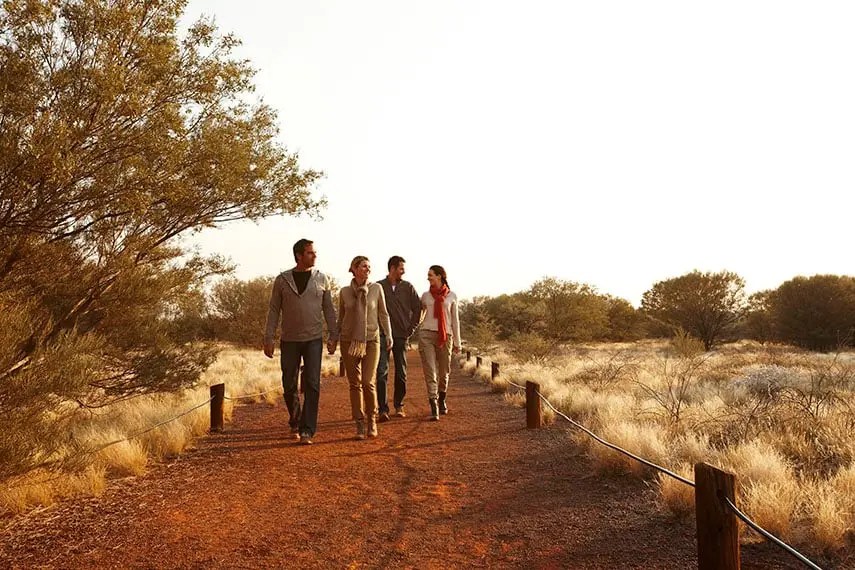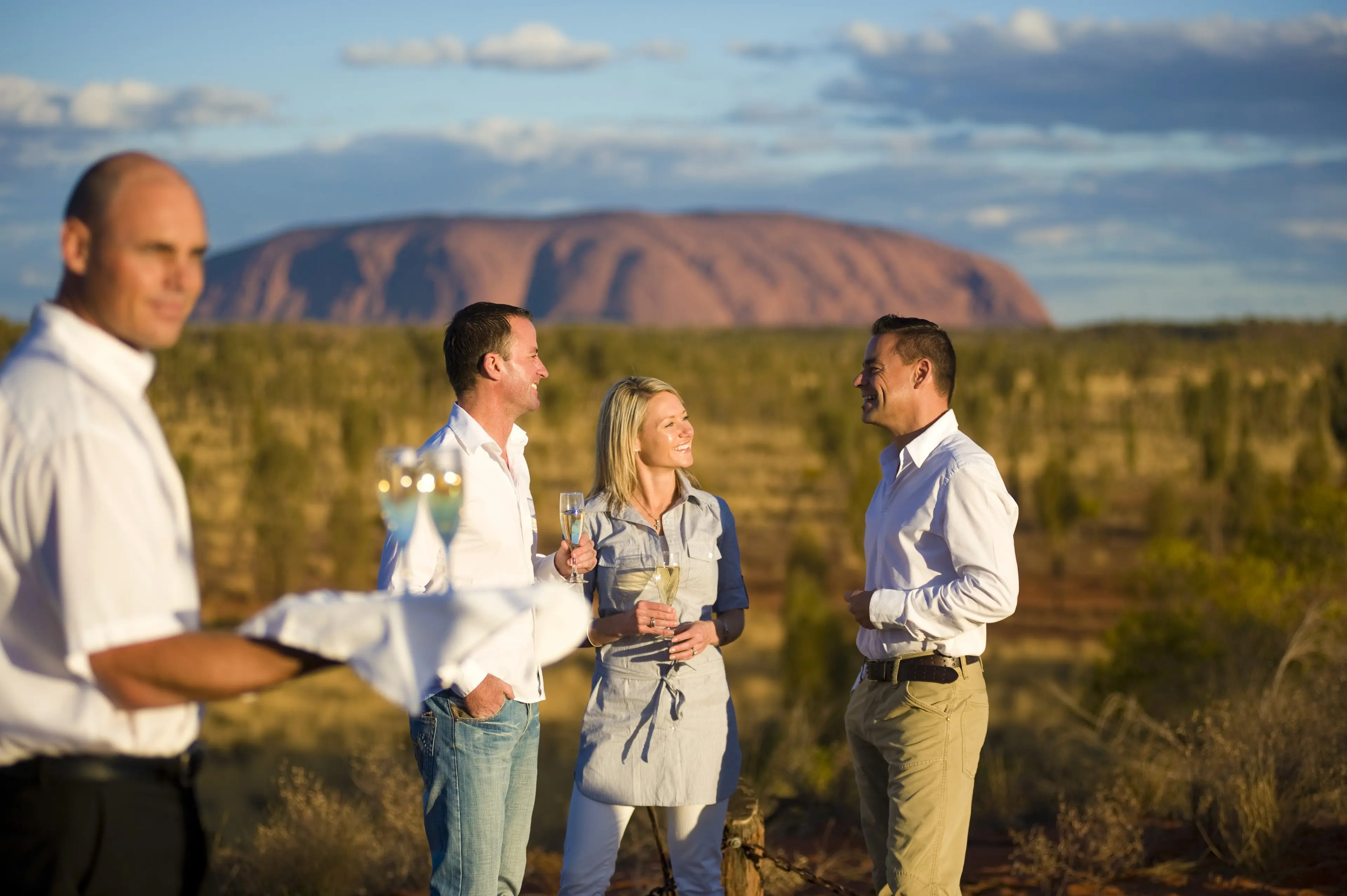Sunny, with a 100% chance of Just Wow!
While the Red Centre experiences hot days and cool nights, it still experiences distinct seasons that shape its unique environment. To help plan your trip, we have compiled essential weather information for each season. You can also learn more about the different seasons and what to pack on your outback adventure here.
Weather at Uluru

Summer in the Red Centre is hot, with temperatures averaging 20-35°C (60-95°F) and peaking at 40°C (104°F). To stay comfortable, explore in the early mornings or at sunset, and relax by the pool during the day. January is the wettest month, bringing about 40mm (1.5") of rain, which can create cascading waterfalls down Uluru.

April and May are the best months to visit Uluru, as temperatures are pleasant and there is little chance of rain. Expect plenty of sunshine, with temperatures ranging from 12 to 27°C (53.6 to 80.6°F). Spend your day exploring various free guest activities.

In winter, temperatures range from 4.8 to 20°C (40.6 to 68°F), with July being the coldest month. It's common for temperatures to drop to 0°C (32°F), leading to thick frost. Winter visitors should dress in layers to adjust for changing temperatures.

From September to November, temperatures rise, ranging from 13.8-30.6°C (56.8-87°F). During this time, the Outback landscape comes to life with plants busting into bloom, bringing beautiful colours and vibrant wildlife activity.
Sunrise and Sunset
Uluru is world-renowned for its spectacular sunrises and sunsets. There are multiple viewing areas where you can watch the rock formations change colour before your eyes.
Watch the sun rise over Uluru or wind down with dinner and drinks paired with the most beautiful sunset you'll ever see.
Set your alarm early to watch the sun rise over Uluru with Sunrise Journeys. Inspired by the artwork of three local Anangu artists, this experience will transport you through past, present and future as projected light and music moves gently across the landscape. Celebrate a story of love, land and connection, all before a delightful breakfast.
After watching the sunrise, wander through a field of 50,000 lights. As the day winds down, experience Wintjiri Wiru, where and ancient Anangu story is brought to life through drones, lights and traditional music.
Get a taste for native ingredients on one of our award-winning outdoor dining experiences under the stars.
There are so many magical experiences on offer.
